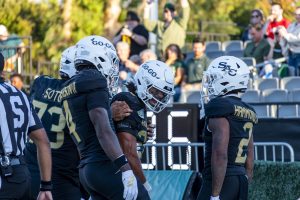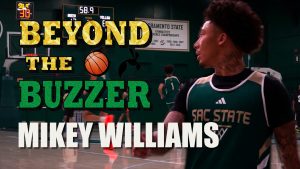Center focuses on student-athletes
October 13, 2010
Even though there are 168 hours in a week, student-athletes still manage to find time to be successful on and off the field, which makes them realize the true value of their time.
By implementing academic programs to help the student-athlete, Sacramento State can now say the success of its student-athletes is from the Student-Athlete Resource Center.
In 1985, when Sac State discussed the potential move to Division I, programs like athletic advising had to be implemented before the program could continue with the changes.
Although Sac State did not go Division I until 1991, athletic advising was already put in motion and led by adviser Len Wycosky.
Ever since Sac State made the move to Division I, the school continues to constantly improve athletic programs for student-athletes to maintain successful college careers. The center is a support system designed to enhance the experience for NCAA Division I student-athletes at Sac State.
“The success of the student-athlete is not just about the academics and going to class,” said Paul Edwards, the director of the Student-Athlete Resource Center. “It is about providing the services and support so that the student-athlete can adapt in all areas of college life.”
Edwards joined Sac State in 1987 and was selected as the center director when the program officially started in 2006.
The main purpose of the program is to help in the development of student-athletes as individuals, as well as to help them become independent while obtaining skills to achieve their academic goals. The program also provides help for Sac State student-athletes to become more successful after college.
“The resources have helped me tremendously,” said senior defensive lineman Christian Clark. “I don’t know where I would have been had I not had the resources. Tutoring and study hall keeps me focused and disciplined.”
Athletic Academic Services include help with the following: summer school, the post-eligibility scholarship program, the academic progress report system and the processing of student-athlete graduation evaluations.
The following services are included in the development of the student-athlete: individual advising, orientations, seminars, group and team meetings, coaches’ compliance and rules education sessions, freshman seminar classes, and a variety of student development and academic workshops.
Communication continues to be effective between the coaching staff, athletes and advisers because of mandatory progress reports. These reports help maintain a structure so the student-athletes can continue to work hard 24/7.
“The advisers guide you through the program to where you need to be,” Clark said. “And if you’re not on schedule, they will let you know.”
Two portions of the center, Athletic Academic Services and Life Skills and Student-Athlete Development are located in Lassen Hall, Room 3002. While in the athletics building, the NCAA Compliance and Financial Services are located in Yosemite Hall, Room 122. The majority of student-athletes utilize the benefits that are offered, whether it is tutoring or workshops, Edwards said.
“I could have probably done it in three years without them. No, no, no, this program definitely helped me,” Clark said. “I probably wouldn’t be where I am without it.”
The academic support system offered through the SARC program is encouraged by the staff to be utilized regularly, Edwards said. One objective is to increase the student-athletes’ Academic Progress Rate.
By increasing the Academic Progress Rate, Sac State will continue to receive scholarships for athletes and remain compliant under NCAA guidelines.
“A lot of what we do is not possible without NCAA support,” Edwards said. “We receive funds based on being affiliated with the Big Sky. Those funds support our tutoring, mentoring, computer lab, fifth-year scholarships and summer scholarships.”
The football section of the center was implemented at Sac State in 2006. Football Academic Adviser Bob Shook came to the program in 2008 and has continued to monitor the football team.
“As an athlete, they’re being monitored constantly,” Shook said. “The coaches are becoming more directly involved with the academics so that we have more successful athletes.”
The coaches have become such a significant part of this program. Not only do the coaches like to maintain a close relationship with student-athletes the advisers like to as well. Shook tries to be an inspiration to students, as he gives the occasional words of advice.
“You will never be in another setting like this again,” Shook said. “So enjoy yourself!”
Alyssa Huskinson can be reached at [email protected]






















































































































